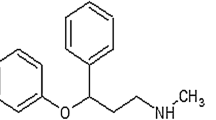Abstract
Schiff base–naphthalene-2-ol (L) was synthesized by a coupling reaction between 2-hydroxy-1-naphthaldehyde and xylylenediamine in ethanol. The product was characterized by 1H NMR, 13C NMR, and mass spectroscopy. L was utilized as reducing and surface functionalizing agents in the synthesis of silver nanoparticles (AgNPs) which were then characterized by high-resolution transmission electron microscopy (HR-TEM) and UV–Visible spectroscopy. The colorimetric sensitivity and metal ion selectivity of L-modified AgNPs with various cations were examined using UV–Vis spectrophotometry. The presence of Fe2+ induced the aggregation of AgNPs through a cooperative metal–ligand interaction, resulting in a color change from bright yellow to dark yellow with a new band at 372 nm. The interference studies confirmed the high selectivity of Fe2+ sensing in presence of cations as well as anions by L-modified AgNPs. A linear relationship between the change of absorption at 372 nm and concentration Fe2+ ranging from 1.30 × 10−5 to 1.13 × 10−3 M was observed with a correlation coefficient of 0.9949. The detection limit of the developed method was 1.06 × 10−6 M. The proposed method has been successfully applied for determination of Fe2+ content in multivitamin tablet samples. The results were in good agreement with the label claim.





Similar content being viewed by others
References
Allen LH (2002) Iron supplements: scientific issues concerning efficacy and implications for research and programs. J Nutr 132:813–819
Ghaedi M, Mortazavi K, Montazerozohori M, Shokrollahi A, Soylak M (2013) Flame atomic absorption spectrometric (FAAS) determination of copper, iron and zinc in food samples after solid-phase extraction on Schiff base-modified duolite XAD 761. Mat Sci Eng C Mater 33:2338–2344
Li HB, Cui ZM, Han CP (2009) Glutathione-stabilized silver nanoparticles as colorimetric sensor for Ni2+ ion sens. Actuators B Chem 143:87–92
Malinsky MD, Kelly KL, Schatz GC, Van Duyne RP (2001) Chain length dependence and sensing capabilities of the localized surface plasmon resonance of silver nanoparticles chemically modified with alkanethiol self-assembled monolayers. J Am Chem Soc 123:1471–1482
Nathalie S, Thomas A, Marie A, Ann-Sofie S (2010) Determination of Fe2+ and Fe3+ in aqueous solution containing food chelators by differential pulse anodic stripping voltammetry. Electroanalysis 22(10):1090–1096
Spolaor A et al (2012) Determination of Fe2+ and Fe3+ species by FIA-CRC-ICP-MS in Antarctic ice samples. J Anal Atom Spectrom 27:310–317
Valeur B, Leray I (2000) Design principles of fluorescent molecular sensors for cation recognition. Coord Chem Rev 205:3–40
Vinod KV, Savarimuthu Philip A (2014) Silver nanoparticles based selective colorimetric sensor for Cd2+, Hg2+ and Pb2+ ions: tuning sensitivity and selectivity using co-stabilizing agents. Sens Actuators B Chem 191:31–36
Wang Y, Yang F, Yang X (2010) Colorimetric detection of mercury (II) ion using unmodified silver nanoparticles and mercury-specific oligonucleotides. Appl Mater Interfaces 2:339–342
Wang R, Yu F, Liu P, Chen L (2012) A turn-on fluorescent probe based on hydroxylamine oxidation for detecting ferric ion selectively in living cells. Chem Commun 48:5310–5312
Xia N, Yang J, Wu Z (2015) Fast, high-yield synthesis of amphiphilic Ag nanoclusters and the sensing of Hg2+ in environmental samples. Nanoscale 7:10013–10020
Xu X, Daniel WL, Wei W, Mirkin CA (2010) Colorimetric Cu2+ detection using DNA-modified gold-nanoparticle aggregates as probes and click chemistry. Small 6:623–626
Zhou Y, Zhao H, Li C, He P, Peng W, Yuan L, Zeng L, He Y (2012) Colorimetric detection of Mn2+ using silver nanoparticles cofunctionalized with 4-mercaptobenzoic acid and melamine as a probe. Talanta 97:331–335
Acknowledgements
This work was financially supported by the Srinakharinwirot University research fund (No.501/2559) and DPST scholarship from Institute for the Promotion of Teaching Science and Technology. I would like to thank the Department of Chemistry, Faculty of Science, for all their support.
Author information
Authors and Affiliations
Corresponding author
Rights and permissions
About this article
Cite this article
Samerjai, W., Dankhanob, L., Chotimai, P. et al. Chromogenic Detection of Fe2+ Using Schiff base–naphthalene-2-ol-modified Silver Nanoparticles. Iran J Sci Technol Trans Sci 43, 451–456 (2019). https://doi.org/10.1007/s40995-017-0425-4
Received:
Accepted:
Published:
Issue Date:
DOI: https://doi.org/10.1007/s40995-017-0425-4




